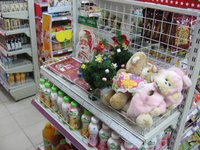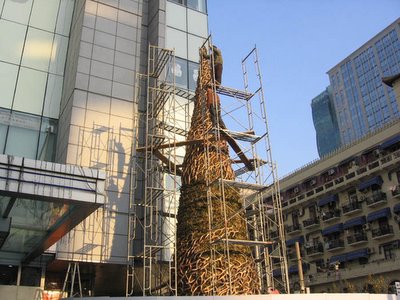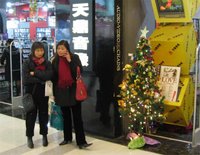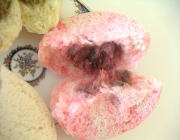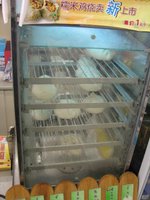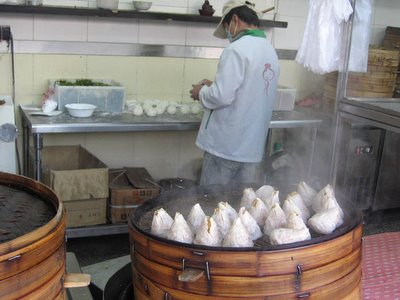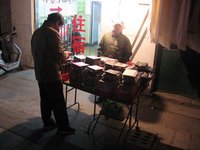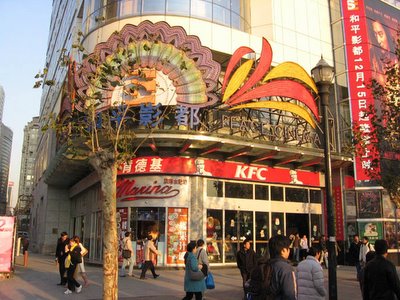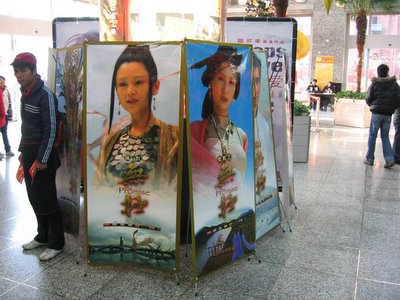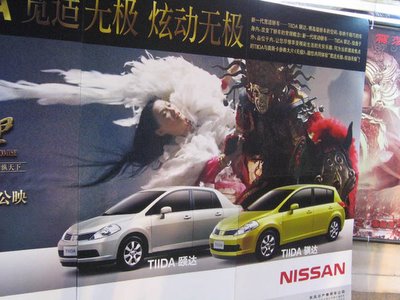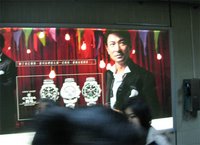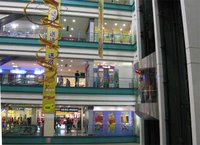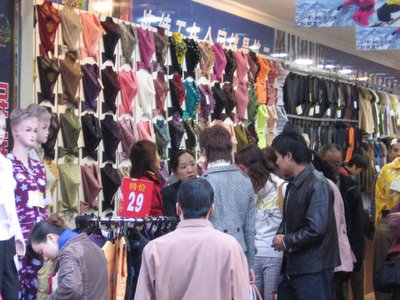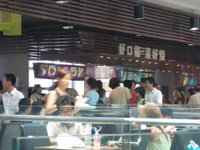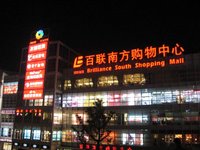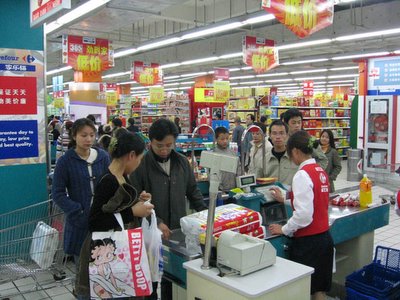In this case, the local restaurant, "Ji Lu's Snacks." As I've mentioned before, I don't think I've had a bad meal in Shanghai, but I haven't had many great ones, either. Ji Lu's falls squarely into this good-but-not-great realm.

I still go maybe twice a week, for a few reasons: first, Shanghai is cold, and it's one of the closest restaurants - while most places offer free delivery, I prefer eating out. Secondly, it's cheap, and a complete meal goes for $1.25. Third, eating out in China can be too much of an adventure for me, it's easy just to go for the consistent stand-by.
Even though the place has "Snacks" in the name, the snacks counter usually isn't running. You can order a wide variety of dishes, even relatively fancy foods if such is your desire. However, people looking for a fancy meal probably would be better going elsewhere. Most people just end up getting the rice plates, which vary from $.75 to $1.50. Here's half the menu, if you can read the lingo.

 Ordering is a low-key affair - usually you order at the counter and they'll bring the food to you. There's a kitchen in the background. Even when the restaurant isn't very busy there's always three or four cooks who seem to be in continuous motion. They're mostly behind a screen but they glance out and I glance back at them.
Ordering is a low-key affair - usually you order at the counter and they'll bring the food to you. There's a kitchen in the background. Even when the restaurant isn't very busy there's always three or four cooks who seem to be in continuous motion. They're mostly behind a screen but they glance out and I glance back at them. 
This restaurant can be extremely busy at around noon or 6:00, however I often have a late dinner around 7:30 or 8, and there'll usually just be a few other diners - sometimes I'll be the only one.

What's included with the meal is fairly typical: the dish with some rice, some bok choy, an egg hard-boiled in soy sauce, and a bowl of a light soup. A few things are interesting: first, tea isn't drunk with dinner, and the soup provides the liquid for the meal - sometimes you see people drinking beer, but it's not common. Second, even on the coldest days, some of the dishes will be warm, and others served chilled - either the soup or the vegetables.

If you notice the picture, it's Kung Pao Chicken. It's a little not what you'd expect - there's about as many peanuts as pieces of meat. The sauce is sweet, salty, and tangy, with a slight emphasis on the sweet. It's a little oily. Good, even delicious, but nothing you'd write home about.
That is my normal food to eat at this restaurant, although I don't order it anywhere else. Some other foods they serve? Beef Curry, Fried Rice, Salty Fish, etc. Ordering can be a bit of a guess though, because even if you can read the characters, a lot of foods's names are less descriptions and more stories - even "Kung Pao Chicken" literally means "Palace-Blows-Up Chicken Pieces." If you've never had Kung Pao Chicken before, who knows what that means. You have to try everything and remember which ones you like. The waiters and waitresses are all pretty friendly with offering recommendations and advice, though, and Chinese people seem to rely on it just as much as me.



